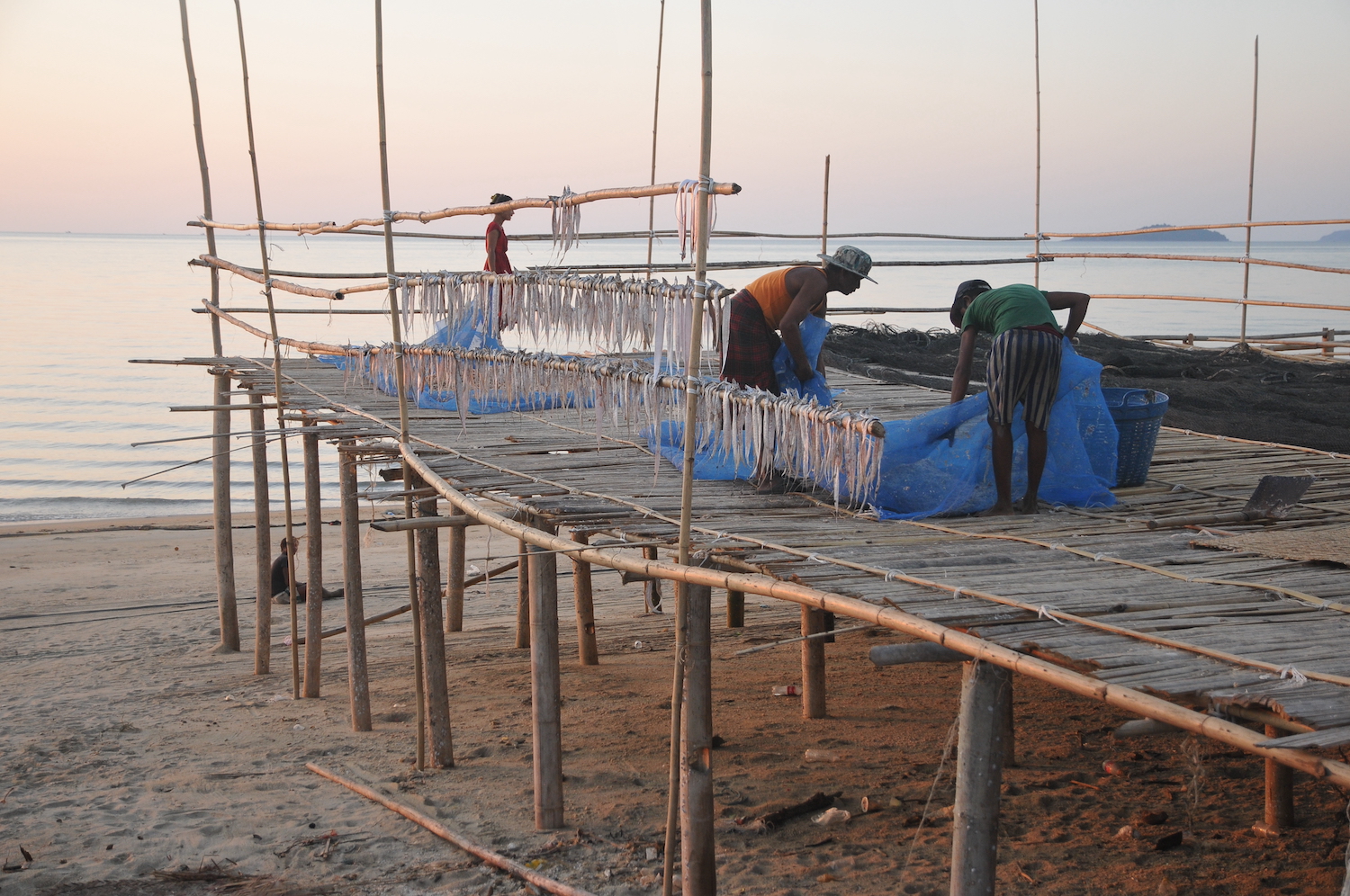|
|
|
Commonly found in Southeast Asia including in Myanmar, leaves from the kratom tree have long been used as a traditional medicine to treat various health conditions, including diabetes, diarrhoea, fever and pain. Kratom is currently banned in Myanmar, and the WHO's Expert Committee on Drug Dependence (ECDD) is discussing this week whether it should be placed under international drug control. Instead of criminalisation, however, this commentary argues that legal regulation of kratom could contribute to building safer communities, promoting development and supporting peace efforts in Myanmar and beyond.
These commentaries are intended to contribute to a broader understanding of the many challenges facing the country and its peoples.
See the complete list of all the Myanmar commentaries.
|
|
|
|
Kratom in Myanmar and southeast Asia: time for legal regulation?
A Myanmar Commentary by TNI
|
|
 Fishing community in Mon State. Kratom leaves are commonly used by fishermen working at sea to cope with difficult working and climatic conditions / Photo credit TNI
Fishing community in Mon State. Kratom leaves are commonly used by fishermen working at sea to cope with difficult working and climatic conditions / Photo credit TNI
|
|
|
The multiple crises of coup, covid and conflict that conflated and struck Myanmar are currently the main focus of people’s attention, both domestically and abroad. These crises have affected every sector of society, bringing enormous suffering and misery to families and communities across the country.
Although it is understandably not a priority issue for people in Myanmar, an important international meeting on drug policy is taking place this week in Geneva, which could have far reaching repercussions for the country. Initiated on the 11th and planned to end on 15 October 2021, the Expert Committee on Drug Dependence (ECDD) of the World Health Organization (WHO) is conducting a pre-review of kratom. Kratom is a tree indigenous to Southeast Asia that has long been cultivated and consumed by communities in Mon State and Tanintharyi Region. The expert committee will examine the current state of evidence on the potential of kratom and two of its main chemical compounds - mitragynine and 7-hydroxymitragynine, to cause dependence, harms to the health of users, and to be used for therapeutic purposes. On this basis, it will decide whether a formal critical review is justified, a step that could ultimately - but not necessarily - lead to the placement of kratom under international control.
Kratom is currently not included among substances placed under international control, and has never been reviewed by WHO. While illegal in Myanmar under the 1993 Narcotic Drugs and Psychotropic Substances Law, Thailand has recently fully legalised the cultivation, use, trade and manufacturing of kratom. Kratom use is also prevalent in Malaysia, Indonesia, Papua New Guinea and the Philippines.
|
|
|
|
|
|
|
|
|